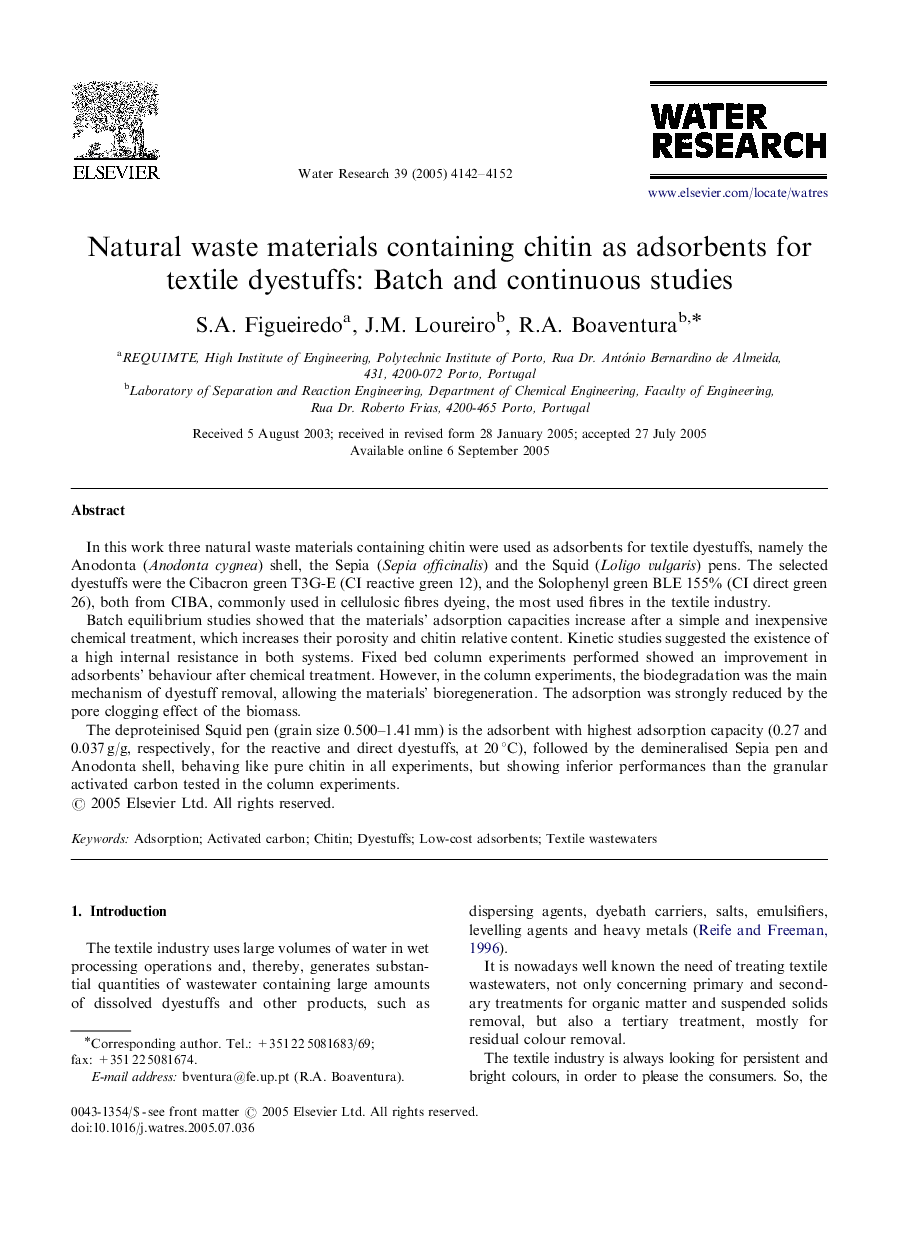| کد مقاله | کد نشریه | سال انتشار | مقاله انگلیسی | نسخه تمام متن |
|---|---|---|---|---|
| 4484977 | 1316937 | 2005 | 11 صفحه PDF | دانلود رایگان |

In this work three natural waste materials containing chitin were used as adsorbents for textile dyestuffs, namely the Anodonta (Anodonta cygnea) shell, the Sepia (Sepia officinalis) and the Squid (Loligo vulgaris) pens. The selected dyestuffs were the Cibacron green T3G-E (CI reactive green 12), and the Solophenyl green BLE 155% (CI direct green 26), both from CIBA, commonly used in cellulosic fibres dyeing, the most used fibres in the textile industry.Batch equilibrium studies showed that the materials’ adsorption capacities increase after a simple and inexpensive chemical treatment, which increases their porosity and chitin relative content. Kinetic studies suggested the existence of a high internal resistance in both systems. Fixed bed column experiments performed showed an improvement in adsorbents’ behaviour after chemical treatment. However, in the column experiments, the biodegradation was the main mechanism of dyestuff removal, allowing the materials’ bioregeneration. The adsorption was strongly reduced by the pore clogging effect of the biomass.The deproteinised Squid pen (grain size 0.500–1.41 mm) is the adsorbent with highest adsorption capacity (0.27 and 0.037 g/g, respectively, for the reactive and direct dyestuffs, at 20 °C), followed by the demineralised Sepia pen and Anodonta shell, behaving like pure chitin in all experiments, but showing inferior performances than the granular activated carbon tested in the column experiments.
Journal: Water Research - Volume 39, Issue 17, October 2005, Pages 4142–4152